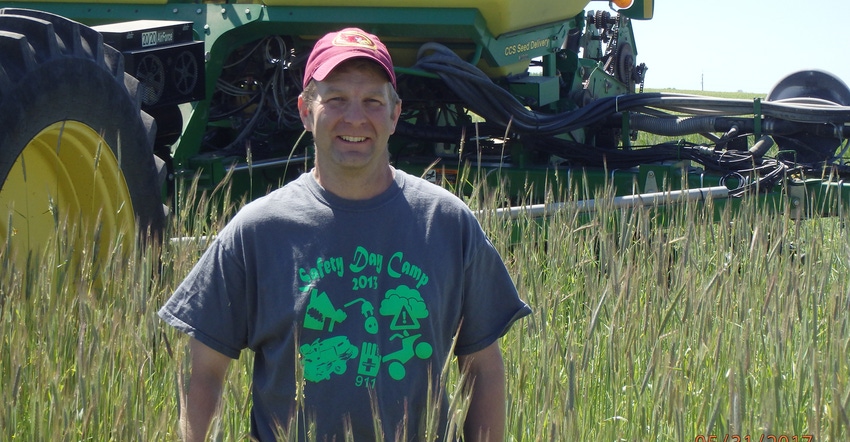May 30, 2019

With a wet spring and delayed planting, the time-saving benefits of no-till and strip till shine even brighter. Avoiding tillage, you can get a planter in a field and seed in the ground quicker, as soil as conditions allow.
Will this spring’s late planting season persuade more farmers to switch to no-till and strip till? Many couldn’t do tillage last fall because of a soggy, prolonged harvest season. They had more cornstalk residue to deal with this spring. “We are fielding more questions about no-till, strip till and cover crops,” says Doug Adams, a technician with USDA’s Natural Resources Conservation Service at Humboldt in northern Iowa.
Adams also farms a corn-soybean rotation, strip-tilling corn and no-tilling soybeans. He has planted some corn-on-corn strip till. “I’ve been no-till soybeans and strip-till corn since 2000,” he says. “It saves a lot of time and saves on fuel cost. No-till and strip till reduce erosion, help protect water quality, and improve soil health, too.”
A unique perspective
Adams began working part time for NRCS in 1995 before going full time in 2000. His farming operation has grown to about 1,100 acres since he first began farming in 1993.
Due to wet weather last fall, Adams was unable to build the strips for 2019 corn planting. Going to Plan B, he hoped to make the strips this spring, but too much rain again washed out his plan. He ended up planting corn no-till into a cereal rye cover crop: planting green. That is, he terminated the crop and planted as soon as possible. The rye was seeded last fall.
“The rye was 16 to 20 inches tall this spring when we sprayed herbicide to terminate it,” he notes. He finished planting corn May 16; then rainy weather resumed and postponed soybean planting.
Next step for his 2019 corn crop was to sidedress nitrogen. “We split our N application into two different timings,” Adams explains, “an early sidedress and a later sidedress. It’s ideal to build the strips in the fall and inject fertilizer. Since we couldn’t do that last fall, my hope was to have a nice, dry March, build the strips and put some urea in them. That’s ideal for corn, having some N under the plants.”
Adjusting to conditions
Adams’ planter isn’t set up to apply fertilizer. “That would work, if we could apply some N with the planter,” he says. “Instead, we use the early sidedress application.”
Adams prefers to not terminate his cover crop too early. He aims to get as much cover crop growth as possible before planting corn and soybeans. “If we terminate it early, the rye residue starts to fall down, keeping the soil wetter than it otherwise would be, instead of drying the topsoil so we can plant,” he says. “Terminating a rye cover at planting allows us to pull as much moisture out of the ground as we can before we plant. Then as the rye cover crop dies, falls down and mulches the soil, it will keep the ground moist and cooler during summer months, when we need the moisture.”
About the Author(s)
You May Also Like






